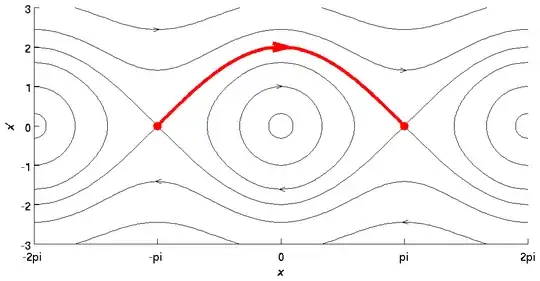Consider the following trajectory
$$\dot{x}(t) = 1-\frac{x(t)^2}{x^2_0}.$$
The solution to the above is as follows
$$x(t) = x_0\coth\left[x_0t+\coth^{-1}\left(\frac{x_i}{x_0}\right)\right] \quad x > x_0$$ $$x(t) = x_0\tanh\left[x_0t+\tanh^{-1}\left(\frac{x_i}{x_0}\right)\right] \quad x < x_0.$$
From the above solution, one can see that $x = x_0$ is a stable point. However, if you take another derivative of the trajectory, we get $$\ddot{x}(t) = -\frac{2}{x^2_0}x(t)+\frac{2}{x^4_0}x(t)^3.$$ If you take the RHS in the above as as $-V'(x)$ then the potential we get is $$V(x) = -\frac{1}{2}\left(1-\frac{x^2}{x^2_0}\right)^2.$$ As you can see, in the above potential $x = x_0$ are unstable point as $V''(x_0) < 0$. How does one resolve this contradiction? Is taking a second derivative of the trajectory like that incorrect?
